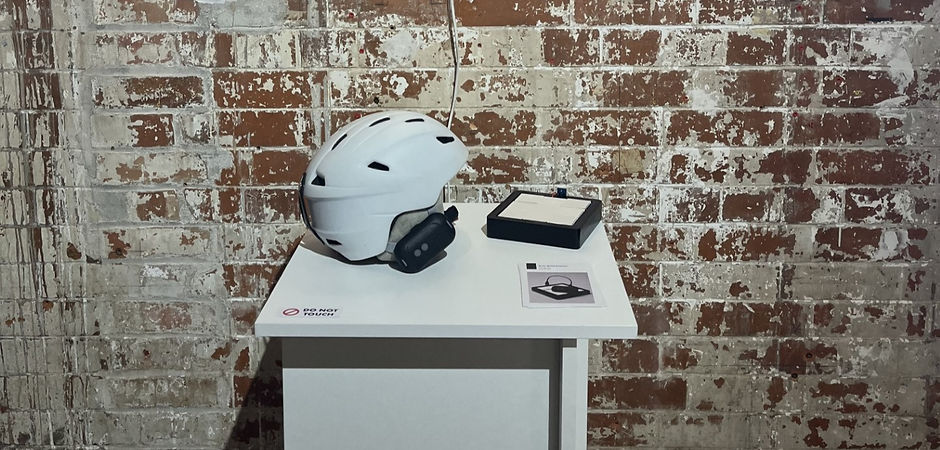Jessica Logan Portfolio
Brain Bleed Detector
Self-Powered Head Injury Monitoring Device for Ski Helmets
This final year major project explores two technologies. The use of an accelerometer inside a helmet to measure impact of head injuries and thermo-electric generators which power the device from the heat of the user's head.

The Problem
Brain bleeds often cannot be detected immediately, the patient may seem fine for a few hours, sometimes days. CT scans are the only way to detect any bleeding on the brain. If the bleed is not detected, doctors cannot drain the blood and permanent long-term damage or fatality occurs. Force of impact correlates to severity of the head injury and being able to measure the impact of the crash/fall allows the severity of the head injury to be measured. Using an accelerometer in a ski helmet, skiers will be able to record impact and hence severity of their accident and they and the doctors will know if a CT scan is necessary before showing symptoms.

Testing 2 peltiers in series with no heat sink or voltage booster generated 0.08v.

9 Thermo-Electric generators ature create 3.3 volts using a temperature difference from the heat of the hand with room temperature. The temperature difference inside the helmet will be much larger and only 4.5 peltiers will be needed to power the accelerometer.

An Arduino Nano was used with a built in accelerometer to upload the code for the LEDs and brain injury thresholds. KiCAD was used to layout the electronics schematics.

Each LED represents a force threshold. 66g-81g means 25% chance of concussion. 82-105g is 50% chance concussion. 106g+ is 80% chance and possible TBI/brain bleed. This threshold is where the user is recommended to immediately get a CT scan.

The brand is called Ahead and is centred around a forward thinking tech innovation company with a main focus on sport safety for head injuries.

The electronics consist of 3 LEDs, Arduino Nano with built in accelerometer, charging board, 3.3v battery and an on/off button. In a future version a bluetooth module would be added to connect to the users phone. All boards would be made into one PCB to reduce size.

Device on helmet. Future version built into a helmet and electronics miniaturised.

Drop tests were carried out on the device to determine what materials could withstand the crashes.

Trialling using a supercapacitor to store the energy generated from the peltiers. In the end this was not necessary.

User Journey Storyboard
Connecting the Device with the User